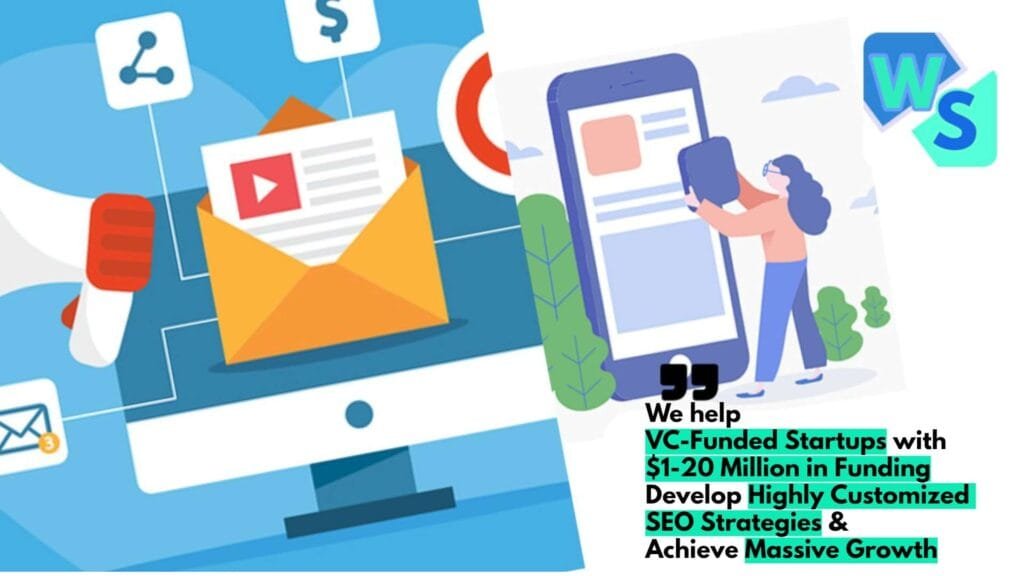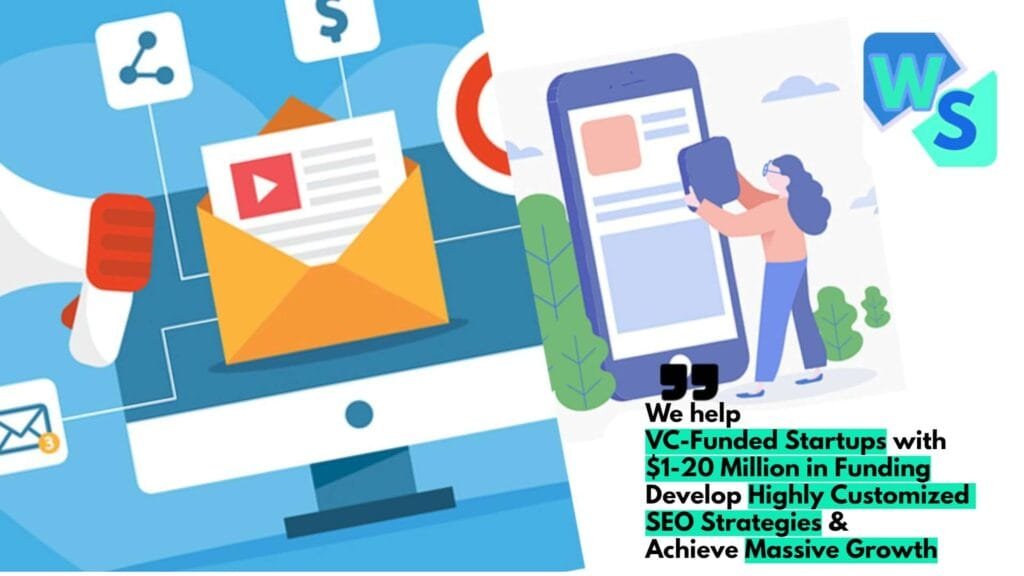Understanding Predictive Analytics
Definition and Applications
Predictive analytics, in its simplest form, is all about using past data to make educated guesses about what’s ahead. Whether it’s spotting a possible hiccup in machinery tomorrow or trying to figure out next year’s cash flow, it’s all in a day’s work for this smart approach (HBS Online). When it comes to marketing, this means tapping into data mining, predictive modeling, and machine learning to get a jump on trends, customer wants, and how campaigns might pan out (Itransition).
The potential uses are quite the mix. Companies find it invaluable for boosting efficiency, giving marketing efforts more zing, and fitting customer needs like a glove. Armed with these insights, businesses can make big decisions that steer their ship and manage resources like a pro.
| Application Area | Description |
|---|---|
| Marketing Trends | Keeping an eye on the future by looking at the past |
| Customer Behavior | Guessing what customers might do next |
| Campaign Outcomes | Checking how well marketing plans might work |
Importance in Marketing
In marketing, predictive analytics is like having a crystal ball. By tracking what happened before, it helps businesses tweak what’s next. Armed with predictive analytics in marketing, companies can tailor their messages to charm customers.
Here are a few ways it helps marketers:
Personalized Marketing: Delving into a customer’s past can help whip up messages and specials that really hit home (Itransition).
Improved Customer Engagement: Figuring out customer behavior trends lets businesses connect with them in ways that matter most.
Enhanced Campaign Models: With a clearer view of what works and what doesn’t, predictive analytics fine-tunes marketing playbooks.
Getting a head start with predictive analytics gives businesses a leg up over competitors, boosting their marketing game. To dive into more about marketing tactics that use predictive analytics, check out our bits on AI marketing tools and AI-driven marketing campaigns.
Key Elements of Predictive Analytics
Predictive analytics is a brainy approach in marketing, helping folks at companies see what’s coming down the pike, tweak their strategies, and get chummier with their customers. Let’s break down the basics you need to get the ball rolling with predictive analytics.
Data Utilization
Data is the heartbeat of predictive analytics. It’s all about gathering a whole lot of numbers, spotting trends, and using that info to make smart decisions in marketing. Talk about working smarter, not harder! By slicing and dicing data, companies can sort out who their customers are, decide which leads to chase, and plan out campaigns with a clear goal in mind.
| Data Sources | Description |
|---|---|
| Customer Data | Stuff collected from how customers act, what they like, and things they do. |
| Market Trends | Info showing changes in markets, shifting customer tastes, and the ups and downs of the economy. |
| Historical Data | Old data tapped to figure out patterns and see into the future. |
Think of data mining, predictive modeling, and giant data platforms as your toolkit to make sense of things. This way, you can fine-tune your efforts, get the biggest bang for your buck, and make sure every dollar is well spent.
Statistical Methods
When it comes to predictive analytics, stats are your secret weapon. They help crunch numbers and offer tools like regression analysis to spell out how things connect. It’s all about making sense of what’s what and figuring out what’s next. By studying past trends, marketers can put together campaigns that hit the mark.
| Statistical Method | Application |
|---|---|
| Regression Analysis | Shows how things link up and helps forecast changes. |
| Time Series Analysis | Looks at data gathered at set time frames. |
| Cluster Analysis | Groups similar info to spot broader trends. |
All these methods make it possible to really wrap your head around how past and current results link up, paving the way for marketing that packs a punch.
Machine Learning Models
Machine learning is the tech wizard behind predictive analytics, making it possible to really crunch and understand data on a whole new level. These smart algorithms learn from past info, picking up on patterns and guessing customer behavior just like magic.
| Model Type | Purpose |
|---|---|
| Supervised Learning | Learns from labeled examples to predict outcomes. |
| Unsupervised Learning | Digs through unlabeled data to find surprise patterns. |
| Reinforcement Learning | Uses rewards to figure out the best decisions. |
Thanks to these models, marketers can decide who’s ready to buy. It makes keeping customers in the loop a breeze, boosting chances of turning interest into sales. Plus, machine learning takes personalization up a notch, making sure marketing messages really vibe with folks.
In a nutshell, using data, statistics, and machine learning are like the three amigos of predictive analytics. They work together to give organizations the scoop on how to tweak marketing tactics and foster better relationships with customers. For a deep dive, check out what AI’s doing in marketing tools or its role in digital marketing.
Predictive Analytics in Marketing
Predictive analytics is shaking up marketing by diving into the numbers to guess what customers are gonna do next. This makes those marketing campaigns hit the mark more often. Let’s look into how predictive analytics supercharges marketing with behavioral targeting, campaign tweaking, and figuring out who’s likely to buy.
Behavioral Targeting
Behavioral targeting is all about using predictive analytics to sift through customer data—like what they’ve bought before, what they like, and how they shop. By sprinkling in some data mining and machine learning pixie dust, marketers can foresee what trends customers might jump on. This tech wizardry helps businesses send the right message to the right folks, making sure the campaigns are spot-on in both delivery and content. Need a bit more proof? Check how it’s discussed at Itransition.
| Customer Segment | Predicted Behavior | Targeted Action |
|---|---|---|
| High Engagement | Ready to buy | Personalized deals |
| Low Engagement | Risk of tuning out | Reminder ads |
| Price-Sensitive | Looking for deals | Special discounts |
Campaign Optimization
Predictive analytics is like a crystal ball for marketing campaigns. By evaluating the hits and misses from past campaigns, marketers can identify which tactics worked and which didn’t. This insight equips them to make decisions that boost the campaign’s overall punch and stretch marketing dollars further. Yes, there’s more about such strategies over at Itransition.
| Campaign Element | Past Performance Insight | Optimized Strategy |
|---|---|---|
| Channel Selection | Email clicks were low | Play the social media card |
| Timing | Best hits over weekend | Aim for Saturday launches |
| Message Type | Discounts lure in leads | Push time-limited offers |
Lead Conversion Prediction
In the lead jungle, predictive analytics swings into action by sorting out who’s hot, warm, or cold. This helps marketers put their energy where it matters. There was even a case where businesses saw a 38% pop in conversion rates thanks to chunking out the leads smartly (Itransition). With such predictive insights, marketing teams can target leads with the highest potential, making sales efforts way more effective.
| Lead Category | Conversion Likelihood | Recommended Action |
|---|---|---|
| Hot | More than 70% | Quick follow-ups |
| Warm | 40% to 70% | Aim for nurturing tactics |
| Cold | Under 40% | Light touch, look elsewhere |
Using predictive analytics in marketing isn’t just about improving personal experiences. It’s a strategy booster that cranks up engagement and effectiveness. If you’re curious about tech tools or automation magic enhancing these predictions, check our entries on AI marketing tools and automation in digital marketing.
Benefits of Predictive Analytics in Marketing
Using predictive analytics in marketing can flip the script on how businesses bond with customers, spice up their campaigns, and give their marketing strategies a serious boost. Let’s break down some of the perks of sliding predictive analytics into the marketing game plan.
Personalized Marketing
Predictive analytics is a game-changer for marketers wanting to whip up personal content. By sifting through past customer data, brands can send out messages that actually connect with folks. It’s about tuning the marketing pitch to match what each person wants, boosting the odds they’ll bite or buy. Companies tapping into these insights can anticipate the quirks of their audience, which makes customers feel more understood and valued.
For instance, when companies roll out AI-powered recommendation systems based on predictive analytics, they’ve seen an uptick of up to 8% in conversion rates, as these recommendations vibe with what customers want (Itransition).
| Type of Personalization | Example Benefits |
|---|---|
| Email Marketing | Suggestions curated from previous buys |
| Product Suggestions | Higher chances of upselling thanks to relevance |
| Targeted Ads | Better click rates due to precise targeting |
Improved Customer Engagement
Predictive analytics also scores big in beefing up how businesses engage with customers. By getting a grip on customer habits and likings, companies can create interactions that hit the mark—right time, right place. Predictive analytics gives marketers the inside scoop on which groups are most responsive to different campaigns, leading to more effective engagement efforts.
Using predictive insights to classify leads as hot, warm, and cold, companies have upped lead conversion rates by as much as 38%. This laser-focus in engagement means resources aren’t wasted, and customers get content that clicks with them (Itransition).
Enhanced Campaign Models
Predictive analytics also sharpens campaign models by offering clearer foresight into industry trends and customer moves. With this power, marketers can dive into precise customer segmentation, focus on the hottest leads, and personalize ads like never before. By tapping into customer data, social chatter, and market trends, companies can predict shifts before rivals and tweak marketing strategies to stay ahead.
Predictive analytics paves the way for spotting churn risks and boosting efficiency in campaigns. This data-centric approach helps in planning campaigns smartly and hitting KPIs, elevating overall marketing success (Itransition).
To wrap it up, predictive analytics is a treasure chest for marketers aiming to tailor campaigns, up their engagement game, and polish their marketing maneuvers. Embracing these insights is a surefire way to fire up a business’s growth and outshine competitors. Wanna dig into more tools that make predictive analytics in marketing a breeze? Check out our list of ai marketing tools.
Implementing Predictive Analytics
Getting predictive analytics right is all about being smart about building models, keeping an eye on them, and choosing the tools that work best. Nail these, and marketers can tap into the power of prediction to sharpen their campaigns and boost customer connections.
Predictive Models Development
Creating predictive models is kinda like solving a puzzle. First up, marketers need to pinpoint the answers they’re chasing with their data. Once the questions are clear, it’s time to hunt down the right pieces—data and metrics. Then, it’s all hands on deck to sift through the data, spotting patterns and trends that feed into the model.
These models often get a boost from machine learning tools, which are like super-smart calculators for data. By using them, marketers can predict things like future sales or how well a campaign might do, just based on current setups (Polymer Search). The insights from these models can be a game-changer for tweaking marketing tactics.
| Step | Description |
|---|---|
| Define Questions | What puzzles are you trying to solve or predict? |
| Collect Data | Snag the right numbers and info to crunch. |
| Process Data | Clean up and dig into the data to prep for models. |
| Develop Models | Craft predictive models with machine learning know-how. |
Monitoring and Iteration
Once the models are good to go, they need to be kept in check. Regular check-ups help ensure predictions match up to what goes down in reality. This means tweaking and updating the models when new data rolls in to keep them ticking. Constant fine-tuning ensures the predictive tools stay in line with marketing goals and rolling customer trends.
It’s important for marketers to evaluate how different strategies are working and make needed tweaks:
- Check how campaigns are doing based on predictions.
- Make model adjustments using fresh data.
- Ensure marketing plans stay sharp and data-driven.
Tool Recommendations
Picking the right gadgets and gizmos can amp up predictive analytics efforts. There are loads of platforms out there that help marketers pull together data sets, manage info, build neat visuals, and squeeze valuable insights from the numbers. Some top picks are:
| Tool | Description |
|---|---|
| Polymer | Great for building solid predictive analytics setups. |
| Tableau | Makes data look good with visualization and analysis. |
| Adobe Analytics | Delivers integrated insights across different marketing channels. |
| Qlik Sense | Handy for data management and visualization power. |
These tools help maximize resources by predicting what customers might do, tailoring messages just for them, and steering clear of chasing leads that won’t pan out (HGS). By employing the right tools and constantly tweaking their game plan, marketers can unleash the full power of predictive analytics in marketing to deepen customer ties and boost campaign results.
Challenges of Predictive Analytics Adoption
Even with the perks up predictive analytics boasts, plugging it into marketing plans isn’t always a walk in the park. Organizations grapple with needs for niche know-how, hurdles with getting folks on board, and the knack to arm users to really make it work.
Specialized Know-How Needed
Predictive analytics throws up a big roadblock with the demand for brainy types who know their way around statistical modeling, R, and Python. Lots of companies might struggle to rope in people with these chops, dragging down tech adoption. Lucky for them, new tools have popped up that are easier to use, so you don’t need to be an expert in tech wizardry to get started.
| Challenge | What It’s About | How to Tackle It |
|---|---|---|
| A Need for Expertise | A major craving for stats and coding superheroes. | Roll out friendly tools. Run some training for the marketing gangs. |
User Adoption Snafus
Getting folks to jump on board presents another big snag. The tools for predictive analytics might find themselves as lone rangers, meaning users have to juggle between their usual biz apps and predictive models. This chop-and-change routine can tank efficiency and fuel pushback against new tech. Bringing machine learning and AI whistles and bells into everyday biz apps makes life easier and nudges user adoption along, offering a smoother ride.
| Issue | What Happens | How to Fix It |
|---|---|---|
| Lone Ranger Tools | Switching messes things up and riles users. | Slot predictive power into regular biz apps. |
Giving Users a Power Boost
Giving users a leg-up is key to squeezing all you can out of predictive analytics. Old-school tools are notorious for not cutting it when it comes to actionable insights, pushing users to hop from app to app to get stuff done. This song and dance just slows things down. Folding smart workflows right into their usual biz apps lets users act on the spot, thinning out frustration and greasing the productivity wheels.
| Challenge | What’s the Big Deal | How to Tackle It |
|---|---|---|
| Slim Pickings on Actionable Insights | It gimps business moves. | Build smart workflows for on-the-fly actions. |
Tackling these issues is crucial to really tap into the full power of predictive analytics in marketing. Zeroing in on user empowerment, making things simpler, and bolstering user buy-in, organizations can roll out predictive strategies to boost growth and sharpen decision-making.
Overcoming Predictive Analytics Challenges
Jumping into predictive analytics for marketing isn’t a walk in the park. But fear not, with a few smart moves and practices, you can sidestep the hurdles and make this tech work for you.
Best Practices
To get predictive analytics running like a well-oiled machine, sticking to some tried-and-true practices is a must. These can help toss out the usual headaches and boost your decision-making power. Here’s what you might wanna consider:
- Data Quality Management: Messy data equals messy results. Keeping your data clean, clear, and up-to-date is like having a solid foundation for your predictions.
- User Empowerment: If you’ve got users hunting for insights, make it a breeze for them to get what they need. Embedded tools in their daily workspace can cut down on the app shuffle (insightsoftware).
- Continuous Learning: Like the rest of us, your models need to keep learning. Feed them new data regularly to keep predictions sharp.
Simplifying Predictive Analytics Projects
Predictive analytics projects have the reputation of being brain busters, stretching out into a jumble of tasks that data scientists lose sleep over. Cutting the bulk out of these projects can give your team a break. Imagine trimming down a tangled web of steps into a straightforward three-prong attack (insightsoftware). Here’s how it looks:
| Process Steps | Traditional Approach | Streamlined Approach |
|---|---|---|
| Step 1 | Data Input | Data Input |
| Step 2 | Data Processing | Data Processing |
| Step 3 | Model Deployment | Model Deployment |
| Step 4 | Model Monitoring | N/A |
| Step 5+ | Complex Iteration | N/A |
Less is more, right? This not only lightens the team’s load but also speeds up getting results out the door.
Streamlining Workflow
A smooth workflow is the secret sauce for making predictive analytics click. Embedding these smart insights into the tools folks already use means they can act like lightning. This integration saves them from jumping between apps and pulling their hair out (insightsoftware). Here’s how you can get workflows on the fast track:
- Integrating Intelligence: Slot predictive smarts right into the gear your team is already on. Instant insights, instant actions.
- Context-Aware Experiences: Read the room, or in this case, the data in history and user behavior. This way, personalized suggestions roll out like red carpets, keeping users grinning and devoted (insightsoftware).
- Monitoring and Feedback Mechanisms: Set up a feedback chain that keeps you ahead of the game, tweaking your path as needed to make those analytic powers work wonders.
Stick with these practices, cut through the clutter, and get your workflow humming. You might just find predictive analytics is your marketing secret weapon, ramping up decision-making and getting your customers more engaged than ever.
Real-world Examples and Success Stories
We’re diving into some jaw-dropping stories of companies who struck gold with predictive analytics in marketing. These tales show just how ace data-driven insights and predictive modeling can be when it comes to crafting marketing moves that hit the bullseye.
L’Oréal’s AI Magic
L’Oréal played a blinder by jumping on the predictive analytics bandwagon with their snazzy AI-powered platform. This bad boy peeks into the future of beauty trends—six months to a whole year and a half ahead. By snooping into what floats their consumers’ boats, L’Oréal tweaks their ads and products to match what’s coming. This sneaky-smart approach keeps them ahead of their rivals and proves yet again how handy predictive analytics can be. Craving more on AI in marketing? Check out the scoop on artificial intelligence in digital marketing.
Mastercard and the IBM Watson Wonder
Mastercard is killing it with customized ad campaigns courtesy of IBM Watson Advertising Accelerator. They’ve harnessed predictive analytics to get super cozy with customer data, boosting engagement and juicing up conversion rates. By getting into users’ heads, Mastercard dishes out content that their customers absolutely dig, building those warm fuzzies and ringing up the sales. If you want to geek out more on AI marketing magic, check the goods at ai marketing tools.
Business Magic: Predictive Analytics in Action
Loads of companies are catching on to the predictive analytics wave to give their marketing strategies a serious leg up. Big names like Facebook, PlayStation, Spotify, and Nike are all over it, using these insights for things like pinpoint ad targeting, spot-on product recommendations, killer playlists, and reliable demand forecasts. This broad usage paints predictive analytics as a Swiss army knife for marketers everywhere (Polymer Search).
| Company | Application |
|---|---|
| L’Oréal | AI platform predicting future beauty trends |
| Mastercard | Custom ads with IBM Watson |
| Ad precision | |
| PlayStation | Spot-on product tips |
| Spotify | Killer playlists |
| Nike | Nailing demand forecasts |
Predictive analytics in marketing is like having a crystal ball—it helps make savvy decisions, turbocharges marketing mojo, and boosts the bottom line. For a deeper dive into AI’s marketing wizardry, flip through our insights on ai-driven marketing campaigns.





















